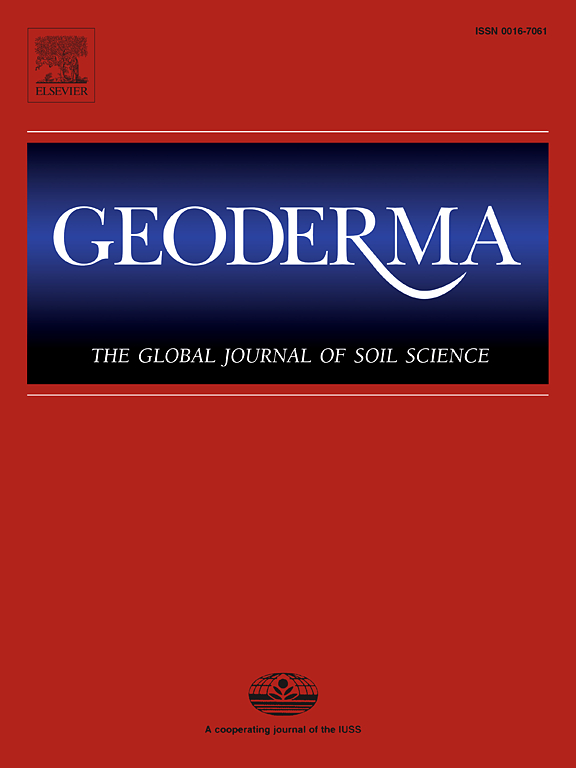世界范围内对干旱和低土壤有机碳的适应
IF 6.6
1区 农林科学
Q1 SOIL SCIENCE
引用次数: 0
摘要
干旱和变暖加速了土壤有机碳(SOC)的流失,从而损害了土壤健康的基本功能,如养分保持和微生物多样性。然而,微生物适应干旱和低有机碳条件的机制仍然知之甚少。利用8年野外操作实验数据,我们发现大部分未被描述的gemmatimonadees可能是适应低碳含量和干旱生态系统的细菌类群之一。它们通过代谢途径合成渗透物(如甘氨酸、甜菜碱、胆碱、外托碱和组氨酸)来增强对干旱胁迫的耐受能力,以及它们通过参与有机物分解的糖苷水解酶基因获取碳资源的能力(分别比总细菌群落高41.6%和11.8%),可以解释这种模式。基于覆盖所有大陆和主要生态系统类型的全球尺度标准化野外调查的进一步分析进一步证实,gemmatimonadees(在更精细的分辨率下)主要分布在干旱地区(干旱草原gemmatimonadees的相对丰度峰值为3.8%)和温暖地区(非洲的峰值为4.5%),这些地区的有机碳含量较低。我们的工作为在不断变化的世界中,一个很大程度上被忽视的微生物群(如gemmatimonadees /Gemmatirosa)如何适应干旱和低碳环境中日益增加的环境压力提供了新的见解。本文章由计算机程序翻译,如有差异,请以英文原文为准。
Gemmatirosa adaptations to arid and low soil organic carbon conditions worldwide
Aridity and warming accelerate soil organic carbon (SOC) loss, thereby compromising essential functions of soil health, such as nutrient retention and microbial diversity. However, the mechanisms by which microbes adapt to arid and low SOC conditions remain poorly understood. Here, using data from an 8-y field-scale manipulation experiment, we found that the largely undescribed Gemmatimonadetes could be among the well-adapted bacterial taxa for thriving under low SOC content and arid ecosystems. Their enhanced ability to tolerate drought stress—mediated by metabolic pathways for the synthesis of osmolytes (e.g., glycine, betaine, choline, ectoine, and histidine)—and their capacity to acquire carbon resource through glycoside hydrolase genes involved in organic matter decomposition (41.6 % and 11.8 % higher than those in the total bacterial community, respectively), could explain this pattern. Further analyses based on a global-scale standardized field survey covering all continents and major ecosystem types further confirmed that Gemmatimonadetes—and, at a finer resolution, Gemmatirosa—predominated in arid (with a peak relative abundance of Gemmatimonadetes reaching 3.8 % in dry grasslands) and warm regions (peaking at 4.5 % in Africa) of the planet, where the SOC content is low. Our work provides new insights into how a largely neglected microbial group, such as Gemmatimonadetes/Gemmatirosa, can adapt to increasing environmental stress in arid and low-carbon environments in a changing world.
求助全文
通过发布文献求助,成功后即可免费获取论文全文。
去求助
来源期刊

Geoderma
农林科学-土壤科学
CiteScore
11.80
自引率
6.60%
发文量
597
审稿时长
58 days
期刊介绍:
Geoderma - the global journal of soil science - welcomes authors, readers and soil research from all parts of the world, encourages worldwide soil studies, and embraces all aspects of soil science and its associated pedagogy. The journal particularly welcomes interdisciplinary work focusing on dynamic soil processes and functions across space and time.
 求助内容:
求助内容: 应助结果提醒方式:
应助结果提醒方式:


